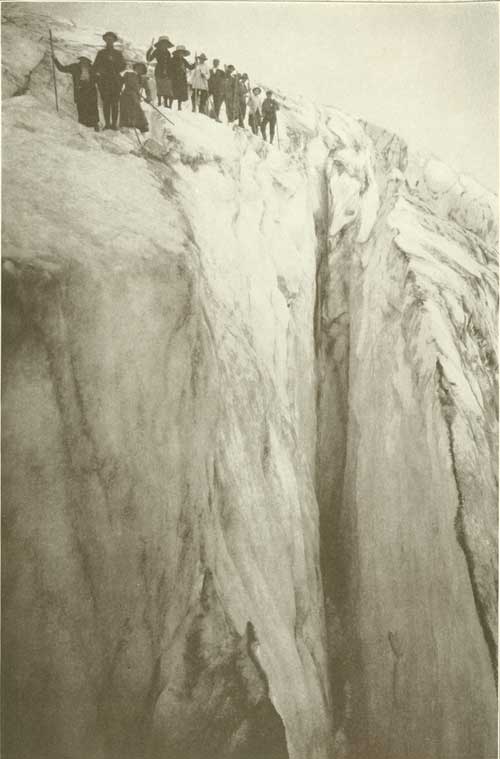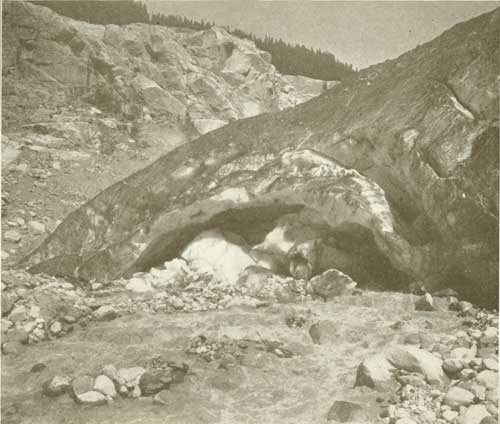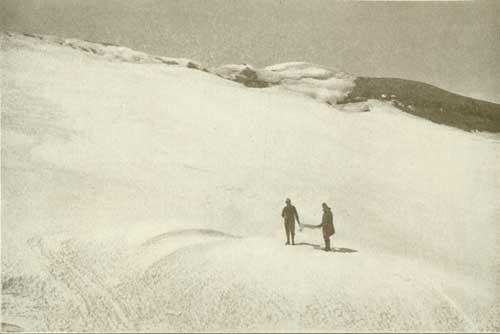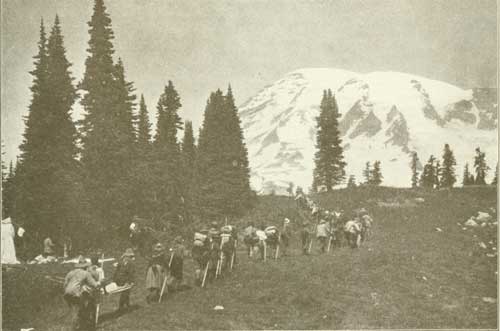|
NATIONAL PARKS PORTFOLIO
|
MOUNT RAINIER NATIONAL PARK
THE GIANT RIVERS OF ICE
 VERY winter the moisture-laden winds from the
Pacific, suddenly cooled against its summit, deposit upon Rainier's top
and sides enormous snows. These, settling in the mile-wide crater which
was left after a great explosion in some prehistoric age carried away
perhaps two thousand feet of the volcano's former height, press with
overwhelming weight down the mountain's sloping sides.
VERY winter the moisture-laden winds from the
Pacific, suddenly cooled against its summit, deposit upon Rainier's top
and sides enormous snows. These, settling in the mile-wide crater which
was left after a great explosion in some prehistoric age carried away
perhaps two thousand feet of the volcano's former height, press with
overwhelming weight down the mountain's sloping sides.
Thus are born the glaciers, for the snow under its own pressure quickly hardens into ice. Through twenty-eight valleys self-carved in the solid rock flow these rivers of ice, now turning, as rivers of water turn, to avoid the harder rock strata, now roaring over precipices like congealed waterfalls, now rippling, like water currents, over rough bottoms, pushing, pouring relentlessly on until they reach those parts of their courses where warmer air turns them into rivers of water.
There are forty-eight square miles of these glaciers.

|
|
LOOKING INTO A GREAT CREVASSE IN THE STEVENS GLACIER Crevasses are caused by the swifter motion of the middle than the sides. This ice is 1,000 feet deep Photograph by Curtis & Miller |

|
|
SNOUT OF NISQUALLY GLACIER WHERE THE NISQUALLY RIVER BEGINS The melting begins miles up under the ice. Every glacier like the Nisqually ends in an ice cave Photograph by Curtis & Miller |

|
|
CLOSE TO THE SUMMIT OF MOUNT RAINIER Photograph by Curtis & Miller |

|
|
LEAVING CAMP OF THE CLOUDS FOR THE SUMMIT Nearly every day parties start for the long hard tramp up the glaciers to Columbia Crest. The climbers must dress warmly, paint their faces and hands to protect the skin from sunburn, and eat sparingly. Dark glasses must be worn. None but the hardy mountain climbers attempt this arduous tramp Photograph by Curtis & Miller |
| <<< Previous | <<< Contents>>> | Next >>> |
yard1/mora2.htm
Last Updated: 30-Oct-2009